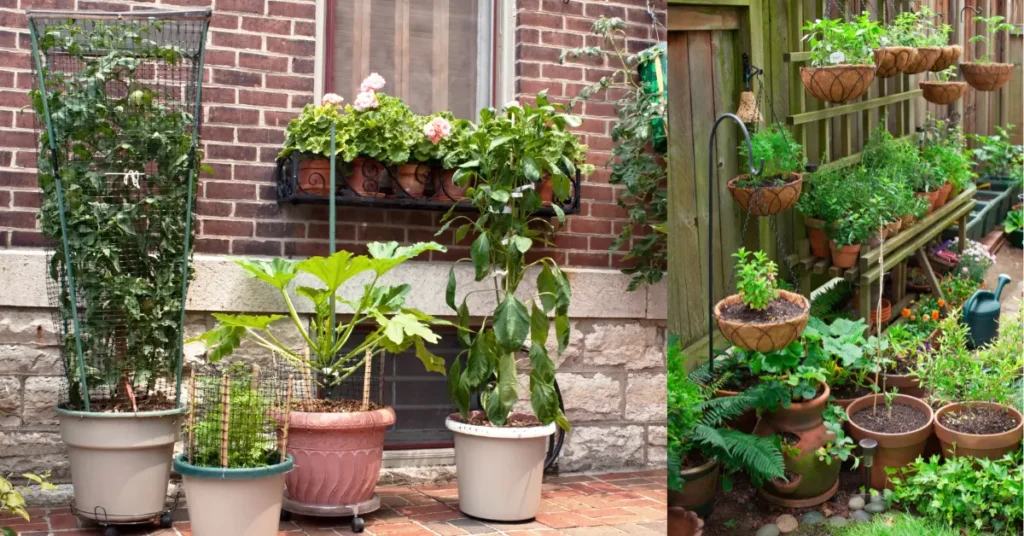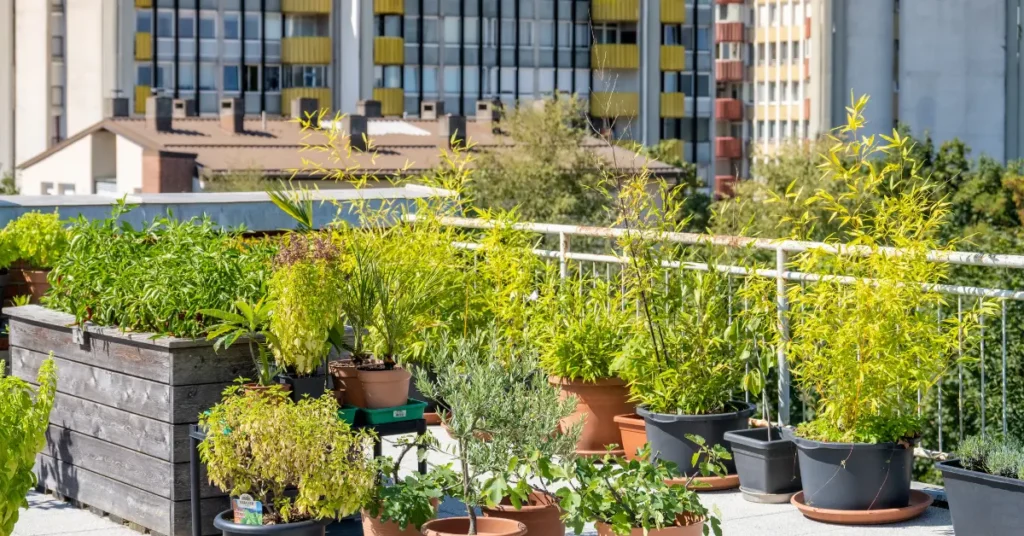Urban gardening is reshaping the way we live in cities, offering a sustainable and rewarding way to bring nature into urban environments. From rooftops to balconies and even indoor setups, urban gardening provides solutions for environmental, economic, and personal challenges. This guide delves deeply into the world of urban gardening, its benefits, practical steps to get started, advanced techniques, and its broader impact on society.
Why Urban Gardening Matters More Than Ever
Urban gardening is not just a trend; it’s a necessity driven by the challenges of urbanization and climate change. Its importance spans across several areas:
1. Environmental Sustainability
Urban gardening plays a pivotal role in mitigating environmental issues:
- Air Quality Improvement: Plants filter pollutants and produce oxygen, countering the harmful effects of urban air pollution.
- Temperature Regulation: Green spaces, especially rooftop gardens, reduce the urban heat island effect, making cities cooler.
- Biodiversity Conservation: Even small urban gardens create habitats for pollinators, birds, and other wildlife.
2. Food Security and Sustainability
As urban populations grow, so does the need for sustainable food systems. Urban gardening helps:
- Reduce reliance on industrial agriculture, lowering carbon footprints.
- Provide fresh, organic produce right at home.
- Foster self-sufficiency in food production.
3. Mental and Physical Health Benefits
Gardening has therapeutic effects on the body and mind:
- Physical activity involved in gardening boosts fitness.
- Time spent with plants reduces stress, anxiety, and depression.
- Green spaces offer a calming escape from the city’s chaos.

Step-by-Step Guide to Starting Your Urban Garden
Creating your urban garden is easier than you might think. Here’s a detailed roadmap to help you start.
Step 1: Analyze Your Space
Urban gardening can thrive in almost any environment:
- Balconies and Patios: Use container gardening or wall-mounted planters.
- Rooftops: Create raised beds or install a green roof.
- Indoor Spaces: Utilize window sills, grow lights, or hydroponic systems for indoor plants.
Make sure to assess factors like sunlight, ventilation, and structural stability before setting up your garden.
Step 2: Choose the Right Plants
Select plants that suit your space, climate, and preferences:
- Low Maintenance Options: Basil, mint, and succulents are great for beginners.
- Vegetables and Fruits: Tomatoes, peppers, strawberries, and lettuce thrive in urban settings.
- Decorative Plants: Flowers like marigolds or orchids add vibrancy to your garden.
Step 3: Gather Essential Tools and Materials
Equip yourself with these basics:
- Planters and Containers: Choose pots with proper drainage.
- Soil and Compost: Use nutrient-rich, organic soil.
- Gardening Tools: A trowel, pruning shears, and gloves are essentials.
- Watering System: Self-watering pots or drip irrigation systems save time and water.
Step 4: Design Your Garden Layout
Plan your garden layout based on the plants and available space:
- Utilize vertical structures like trellises and wall-mounted planters to maximize space.
- Group plants with similar light and water needs for easier maintenance.
Step 5: Start Planting
Follow these tips for success:
- Prepare the soil with compost to enrich it with nutrients.
- Plant seeds or seedlings according to their specific requirements.
- Water plants adequately, ensuring proper drainage to avoid waterlogging.
Maximizing Urban Gardens in Small Spaces
One of the biggest challenges in urban gardening is space limitation. However, with innovative techniques, you can make the most of your available area.
Vertical Gardening
Vertical gardening is a space-saving technique that turns walls into lush, productive gardens. You can use:
- Hanging pots and baskets.
- Vertical racks or shelves.
- Wall-mounted planters for herbs and flowers.
Container Gardening
Container gardening is versatile and mobile, allowing you to grow plants in pots, boxes, or even recycled materials like old buckets. Ensure proper drainage and use lightweight materials for rooftop gardens.
For practical tips on growing plants in limited spaces, explore our guide on Container Gardening. This article provides step-by-step advice for creating thriving gardens on patios, balconies, or other small areas.

Hydroponics and Aquaponics
For those with limited space or soil access, hydroponics and aquaponics are excellent options:
- Hydroponics: Plants grow in nutrient-rich water, eliminating the need for soil.
- Aquaponics: Combines fish farming with plant cultivation, where fish waste nourishes the plants.
Advanced Urban Gardening Tips for Thriving Gardens
Once your garden is set up, take it to the next level with these expert tips:
1. Smart Watering Systems
Install drip irrigation systems or use self-watering pots to ensure consistent hydration while conserving water.
2. Organic Pest Control
Protect your plants using eco-friendly methods:
- Companion Planting: Pair plants that naturally repel pests, like marigolds with tomatoes.
- Homemade Sprays: Neem oil or garlic sprays deter insects without harming plants.
3. Soil Enrichment
Regularly add compost or organic fertilizers to replenish soil nutrients. Consider rotating crops to maintain soil health.
4. Seasonal Adaptation
Adjust your garden to seasonal changes:
- Grow leafy greens like spinach in cooler months.
- Opt for heat-tolerant plants like peppers and eggplants in summer.

Real-Life Urban Gardening Success Stories
Singapore’s Vertical Farms
Singapore leads the way in urban agriculture with its advanced vertical farms. These farms produce fresh vegetables in high-tech, space-efficient setups, providing a sustainable food source for urban residents.
Detroit’s Community Gardens
Once a symbol of industrial decline, Detroit has transformed vacant lots into thriving community gardens. These gardens provide fresh produce to underserved neighborhoods and foster community bonds.
To learn more about fostering sustainable urban agriculture, visit the Detroit Agriculture Network. Discover how they support local communities in growing fresh, healthy food through innovative gardening initiatives.
New York City’s Rooftop Gardens
Rooftop gardens in NYC not only produce food but also reduce energy costs by insulating buildings and decreasing urban heat.
Overcoming Challenges in Urban Gardening
Urban gardening comes with its set of challenges, but solutions are readily available:
- Space Constraints: Use creative solutions like vertical gardening and modular planters.
- Sunlight Shortages: Invest in LED grow lights to supplement natural light.
- Pests and Pollutants: Use raised beds and natural pest control methods to protect plants.
For expert advice on gardening in small spaces, check out Urban Gardening Tips from First Saturday Lime. This guide offers practical solutions for maximizing greenery in urban environments.
The Future of Urban Gardening
Urban gardening is not just about growing plants—it’s about transforming cities. As we face challenges like climate change, food insecurity, and mental health crises, urban gardening offers a sustainable solution. Governments, communities, and individuals are increasingly recognizing its potential.
In the coming years, expect to see:
- More rooftop gardens integrated into urban architecture.
- Increased use of technology like automated irrigation and AI plant monitoring.
- Expansion of community gardening initiatives.
Why Urban Gardening Is for Everyone
Whether you’re a seasoned green thumb or a curious beginner, urban gardening has something to offer. It’s an opportunity to reconnect with nature, reduce your environmental footprint, and contribute to a healthier, greener future.
Start small, stay consistent, and watch as your urban garden flourishes into a sanctuary of life and productivity.

Keywords:
urban gardening, sustainable living, city gardening, rooftop gardens, vertical gardening, hydroponics, container gardening, community gardens, eco-friendly practices























